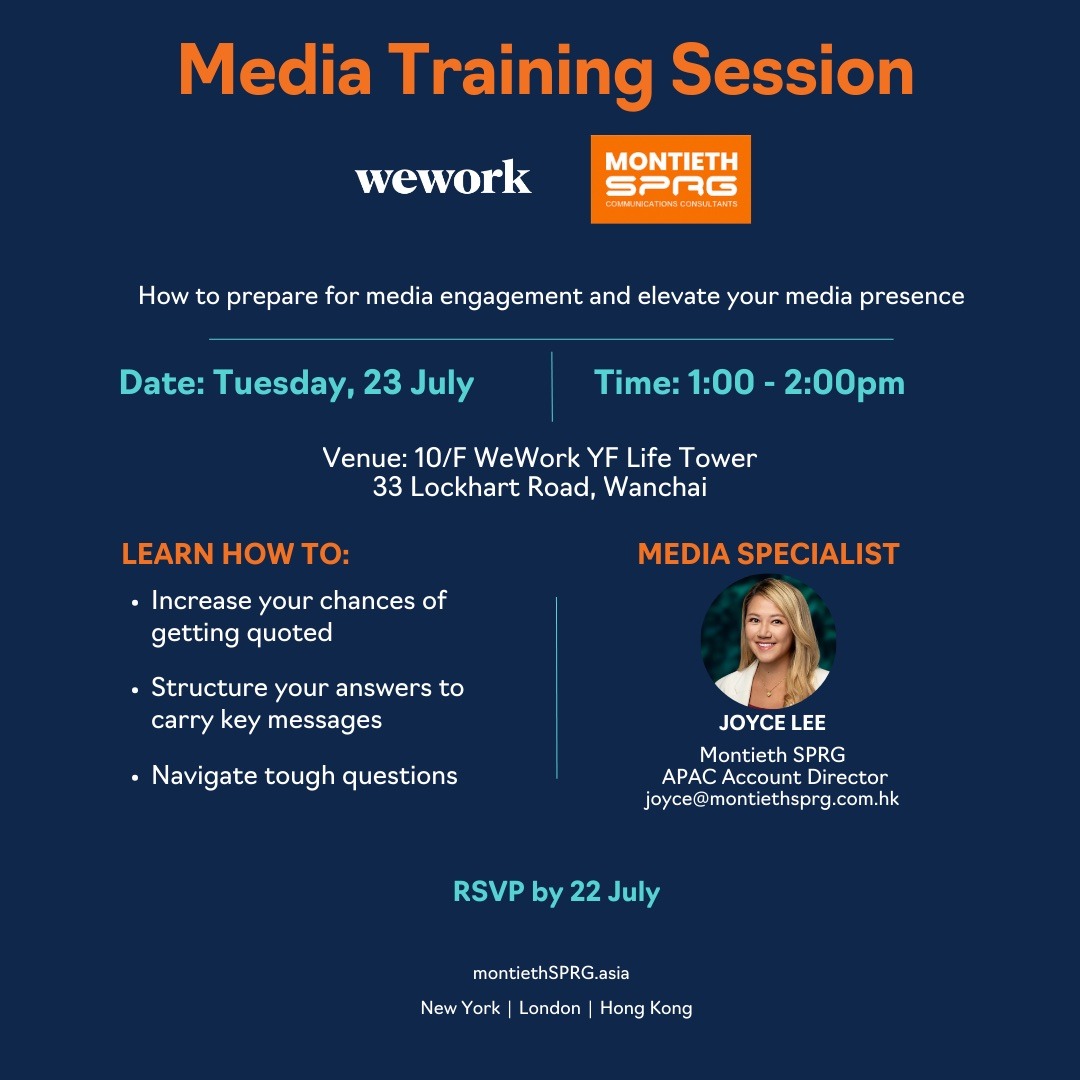Blogs
What Makes an Effective Media Training?

Media training is a critical aspect of preparation to engage with the media. An effective media training session should prepare executives to deliver key messages in a compelling manner, maintain control of the interview, and obtain situational awareness. This should be the case with all types of interviews—on-the-record, on background, or off-the-record, as well as broadcast and phone or virtual (zoom) interviews.
However, more than other types of interviews, speaking on camera or responding to questions while being filmed can be quite challenging, particularly for individuals without much media experience. It’s common to lose track of your thoughts or feel intimidated when facing inquiries or questions from journalists. This is why broadcast media training can be one of the most effective tools for having great media interviews that increase the likelihood of being included in media coverage.
On-camera training will equip you with the ability to think quickly on your feet, facilitate proactive preparation, guide you through mock interviews (known as role play), and help in anticipating the types of questions that may arise during the actual interviews. It can instill confidence and help you obtain on-camera skills to navigate complex interviews.
This is especially true when a company unexpectedly faces a crisis or has significant news to share. In this article, we’ll guide you through the key steps for tailored and effective media engagement no matter what the news is.
1. Understand the Objectives
Before embarking on a media training program, it’s essential to have a clear understanding of the objectives of the training. What are your goals and what do you want to achieve? Do you want to ensure message consistency, understand the media dynamics, build confidence and on-camera skills, or address a specific issue? Identifying these objectives will inform the content and focus of the training.
2. Customize the Program
An effective media training program should be tailored to meet the specific needs of your clients or spokesperson. Each spokesperson faces unique challenges based on his or her role and industry. You should tailor the content to address specific challenges and make sure the training aligns with your spokesperson’s goals and concerns.
3. Experienced Media Trainers
Selecting experienced media trainers or coaches is a crucial step in creating an effective program. These trainers should be well-versed in media dynamics, have a strong background in public relations or journalism, and understand the intricacies of different media titles. Their deep experience can provide invaluable insights and guidance in the training.
4. Practical Hands-On Training
Effective media training should be hands-on and practical. Role-play will create an environment that replicates actual interviews. This will enable spokespeople to build and strengthen their external communications skills. These activities offer spokespeople the opportunity to work on their techniques, messaging, and body language in a safe and controlled setting.
5. Message Delivery
A critical aspect of media training is honing the ability to craft clear and concise messages. Spokespeople will be able to learn how to convey key points effectively, ensuring their messages are memorable and impactful. Developing a messaging framework can help spokespeople stay on track during media interactions.
6. Handling Challenging Questions
From background meetings to interviews, difficult questions can come in different forms during the engagement. An effective media training program will prepare spokespeople to navigate these situations with confidence. Techniques like bridging, flagging, and messaging could steer conversations back to key messages, even in challenging moments.
7. Non-Verbal Communication
Effective communication extends beyond words. Non-verbal cues, such as body language, facial expressions, and tone of voice, play a significant role in how messages are perceived. Spokespeople should be trained to use non-verbal communication effectively to convey confidence and authenticity.
8. Storytelling
The power of storytelling cannot be underestimated in media interactions. Stories can captivate an audience and make messages relatable. Media training will also help spokespeople to develop storytelling skills, which enable them to connect with the audience more effectively.
9. Evaluation and Iteration
Media training should not end with one session. Ongoing support, practice, and preparation are essential for effective engagement that translates into media coverage. Media refreshers or follow-up sessions and providing constructive critiques can help spokespeople build and maintain their confidence while facing the media.
To ensure the effectiveness of the media training program, marketing communications and PR practitioners should measure progress and gather feedback from the spokespeople. This information will make the necessary adjustments and adapt the program based on individual needs.
With a customized training program, the right approach, and ongoing support, spokespeople will be well-prepared to engage with the media and communicate with impact.
Latest News



